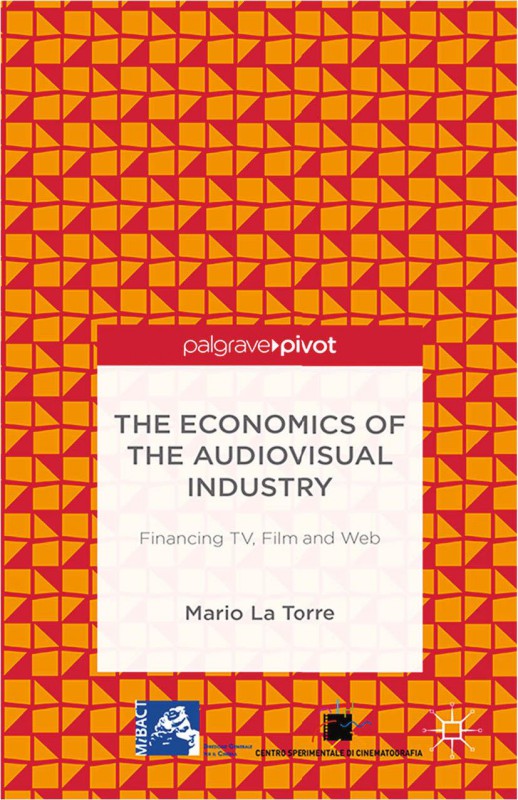The Economics of the Audiovisual Industry Financing TV Film and Web 1st dtion by Mario La Torre ISBN 1137378468 978-1137378460
$50.00 Original price was: $50.00.$25.00Current price is: $25.00.
Authors:Mario La Torre , Series:Management [437] , Author sort:Torre, Mario La , Languages:Languages:eng , Publisher:Palgrave Macmillan UK
The Economics of the Audiovisual Industry: Financing TV, Film and Web 1st dtion by Mario La Torre – Ebook PDF Instant Download/Delivery. 1137378468, 978-1137378460
Full download The Economics of the Audiovisual Industry: Financing TV, Film and Web 1st edtion after payment

Product details:
ISBN 10: 1137378468
ISBN 13: 978-1137378460
Author: Mario La Torre
This book is open access under a CC BY licence. Recent reductions in public funding for audiovisual products have led to dramatic changes in the industry. The lack of interaction between the industry and capital markets has made sourcing funds for audiovisual products especially difficult. This book explains why the distance between the audiovisual and financial markets exists, and considers the perspective of both audiovisual companies and financial intermediaries. Providing a thorough overview of the audiovisual industry in three major categories (television, cinema and web), it analyses the financing behind each. The author adapts the traditional assessment methods to include exploitation rights, distribution deals and risk determinants ; he also proposes a pricing model for the audiovisual products demonstrating that prices and values in a industry of prototype goods do not depend solely on cost and revenue. The book also includes a methodology for analysing the economics of the sector, the different sales agreements between broadcasters and the distribution deals between distributors and independent producers. Finally, a description of the main financial products for private finance is provided, as well as an explanation of how public funds can act as leverage to catalyze private resources through the use of guarantee funds. In The Economics of the Audiovisual Industry the author suggests that rather than relying on subsidized public support, the audiovisual industry should foster private-public partnerships and market dynamics to promote an alternative funding model based on a profitable and long-lasting connection between the audiovisual and financial markets. The valuation model, both for products and firms, proposed in this book are at the basis of this new approach.
The Economics of the Audiovisual Industry: Financing TV, Film and Web 1st Table of contents:
-
Introduction: The Economics of the Audiovisual Industry
- Overview of the audiovisual sector: TV, film, and web content
- Key economic challenges in the audiovisual industry
- The role of content creation in cultural and economic terms
- Structure and goals of the book
-
Chapter 1: The Audiovisual Market Landscape
- Defining the audiovisual market: TV, cinema, and digital content
- The impact of digital technologies on traditional media
- Globalization and the international reach of audiovisual content
- The shifting patterns of consumption: from linear TV to on-demand and streaming services
-
Chapter 2: Financing Audiovisual Content
- Sources of funding in the audiovisual industry: private, public, and hybrid models
- Traditional financing methods: studio-backed films, television networks, and independent films
- Crowdfunding and alternative financing platforms
- Co-productions and international funding models
- Tax incentives, subsidies, and grants in audiovisual financing
-
Chapter 3: The Economics of Film Production
- Key players in the film industry: studios, producers, distributors, and exhibitors
- The budgeting process for films: development, production, marketing, and distribution
- Profitability models: box office, home entertainment, digital distribution, and syndication
- Risk management in film financing: the role of pre-sales, distribution deals, and insurance
-
Chapter 4: The Television Industry and Its Financing
- The evolution of television: From broadcast to cable to streaming platforms
- Financing models in the television industry: network financing, syndication, and subscription-based platforms
- The role of advertising revenue and subscription fees in TV financing
- International co-productions and the role of public broadcasters in funding TV content
-
Chapter 5: The Web and Digital Content Financing
- The rise of digital platforms: YouTube, Vimeo, and emerging OTT services
- Monetization strategies for digital content creators: ad revenue, subscriptions, pay-per-view
- The economics of web series and short-form content
- Brand partnerships and influencer marketing in the digital landscape
- The future of digital content distribution and financing models
-
Chapter 6: The Role of Distribution in Audiovisual Economics
- Distribution channels: theaters, TV networks, streaming services, and digital platforms
- The economics of distribution windows: theatrical release, VOD, pay-per-view, DVD, and streaming
- Impact of piracy and content protection on distribution economics
- Licensing and syndication deals across international markets
-
Chapter 7: Business Models in the Audiovisual Industry
- Subscription-based models: Netflix, Amazon Prime, Disney+
- Advertising-based models: YouTube, Hulu, traditional television
- Hybrid models and pay-per-view services
- The economics of free-to-air vs. pay-TV and subscription services
- Consumer behavior and willingness to pay for audiovisual content
-
Chapter 8: The Economics of Audiovisual Content Consumption
- Changing consumer behavior: from traditional TV to streaming and on-demand services
- The role of social media and user-generated content in driving consumption
- The global content market: international distribution, localization, and cultural preferences
- How data and analytics are shaping content consumption decisions
-
Chapter 9: Policy and Regulation in the Audiovisual Sector
- Government regulations and their impact on audiovisual financing
- Content quotas, intellectual property rights, and copyright issues
- The role of regulators in ensuring market competition and protecting cultural content
- The future of regulation in an increasingly digital and globalized audiovisual market
-
Chapter 10: Trends and Challenges in Audiovisual Financing
- Disruptive technologies and their impact on production and financing (e.g., AI, VR, AR)
- The rise of digital-first content and its impact on traditional media business models
- The challenge of sustaining profitability in a fragmented and competitive market
- Sustainability and environmental considerations in film and TV production
-
Chapter 11: Case Studies in Audiovisual Financing
- Case study 1: Financing a major Hollywood blockbuster
- Case study 2: The economics of an international co-production
- Case study 3: A streaming platform’s rise and monetization strategies
- Case study 4: Crowdfunding and indie film financing success stories
-
Conclusion: The Future of Audiovisual Financing
- The impact of technological innovation on financing models
- The role of global streaming platforms in shaping the future of content creation and financing
- Predictions for the next decade in the audiovisual industry
- Final thoughts on the changing landscape of audiovisual economics
-
References
-
Index
People also search for The Economics of the Audiovisual Industry: Financing TV, Film and Web 1st:
the economics of the audiovisual industry
the impact of the audiovisual industry
the economics of movies
the economics of the music industry
the economics of the movie industry
You may also like…
eBook PDF
The Economics of Mobile Telecommunications 1st Edition by Harald Gruber 0521054656 978-0521054652












